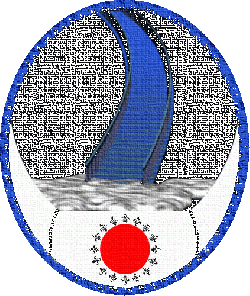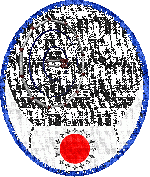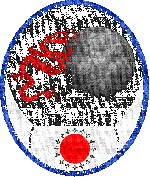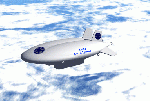ATOE
| Alliance Trans-Oceanique de l'Exploration de l'Espace, SA | |
|---|---|

| |
| Type | Supranational NGO |
| Slogan | Plus loin que l'Infini!, Further than the Infinite! |
| Founded | 10 Aug 2004 22 Thermidor CCXII Gacudai Gannen, Xitxigaçu 6 |
| Location | Paris-sur-Mizouri, Zone Capitale, Osage |
| Key people | Jean-Louis Cattin and Prince Aquixino, Directors |
| Employees | 3,021 |
| Industry | Space Exploration |
| Products | Rockets Artifical Satellites Human Space Flight |
| Revenue | Not-Applicable |
The Transoceanic Alliance for the Exploration of Space was founded after protracted discussions between the governments of Louisianne and Japan. These discussions were initiated between the office of Jean-François Young and Empress Gacudai. After years of discussion and planning, ATOE was created 10 August, 2004 (22 Thermidor CCXII; Gacudai Gannen, Xitxigaçu 6) with the merger of the efforts of Louisianne's CNEL and the Imperial Space Agency of Japan.
History
As Louisianne's first major foray into the world of International Organizations, their efforts were viewed at first with some trepidation. Public opinion of Japan was at times difficult to win over, but in the end, the deal was made.
Of this merger of space efforts, Jean-François Young said:
"...We are not alone. We have friends and allies all over the world who share our devotion to freedom. May I cite as a symbol of traditional and effective friendship the great ally I am pleased to visit today— Japan. I have looked forward to my visit to Japan, and to my discussion with Her Majesty the Emperor, as a meeting of particular significance, permitting the kind of close and ranging consultation that will strengthen both our countries and serve the common purposes of world-wide peace and liberty."
"It is with great pleasure that I announce the end of our negotiations with the Japanese, and the co-union of our space programs, and am pleased to unveil Le Cygne’s sister ship, Cumo Maru, which will be used in our ongoing space efforts. It was agreed upon by Her Majesty the Emperor and myself that this goal of attaining the honor of landing on the Moon for the Louisiannan and Japanese people should be achieved before the end of ten year’s time."
While ATOE flourished in its first few years of existence, there has been a significant structuring back of outlays following the death of Her Majesty the Emperor and President Young. It is expected that ATOE will take more of a leading role in the space effort, but Louisianne will still remain an active partner.
Goals
The explicit goals of ATOE are:
- 1) Successfully launch human beings to space and return them to Earth.
- 2) Establish and orbital base of operations to aid in exploration goals, and serve as a construction platform for deep space vessels.
- 3) Build and Launch before the end of the decade a ship capable of safely transporting humans to study the moon and report on their findings.
- 4) To learn of the Solar System at large and increase our knowledge of our surroundings.
- 5) Share the knowledge gleaned for the betterment of humanity.
ATOE-East launches from Tanegaxima, roughly 500 milles south of the main island. ATOE-West launches from the plains of Louisianne, however, there is a search for a more southerly launch site. News of a lease on the Isla Beata from Saint-Domingo suggest that this will be Louisianne's equatorial launch zone.
Programs
Sarutahico
In typical tradition, the program is named after Japanese mythology. Sarutahico was the god of crossroads, pathways and surmounting obstacles. He stalwartly defended the Bridge of Heaven against Ninigi no Micoto until he had won Sarutahico's fealty. This was chosen after internal debate between JAXA and CNEL, and is used as a symbol for the hope of opening the heavens to man as Earth was opened to Ninigi no Micoto.
The Sarutahico program will function to bring an ATOE cosmonaut into space. Using the Cumo Maru launch vehicle and the Raicho rocket, we will step forward, beginning with sub-orbital flights of humans, hemi-orbital flights, single-orbits and multiple orbits. From that time forward our program will shift to the goal of Çuxima, the stepping stone island.
The first test of the system was successful in 2004 as the heat shield proved its capacity. The second test to prove the atmospheric systems brought to light a minor flaw and the system was revised before the launch of a human to space.
The Sarutahico-2 or S2 was successfully used for the last 10 years, and in 2017, it is expected that the Sarutahico-3 or S3.
Tacamagahara
This program will focus on expanding human presence in space, and is set to replace the initial Çuxima to a larger space-based platform that will eventually lead to space-based manufacturing and refining.
Missions
Cuxima
To the northwest of the Japanese Archipelago lies Corea, and between them, as if a stepping stone from one to the other, the island of Çuxima. In ancient times this island was the sole point of contact between Japan and Corea.
As a stepping stone to the goal of a lunar landing, to our solar system and to the vastness of space, Çuxima will serve as an island stepping stone. It will serve as a staging area, a construction yard. Instead of trying to build ships capable of attaining the stars in the crushing gravity of Earth, we will build our starships in the heavens.
Our Raitxò Rockets will not be lost, but will be maneuvered into a parking orbit and assembled by teleoperation and cosmonauts into the space-station Çuxima, thus re-using valuable resources and preparing for our next goal, the moon.
While initially planned for completion by the mid-twenty-teens, Çuxima was officially inhabited by ATOE bethinauts on 13 April 2020.
Motxi
When the word Motxi is said, it conjures to mind the image of the full moon. The Motxi mission will take place after the establishment of Çuxima. With the use of the new, larger Raijù rockets, the moonship Hilù Maru or Dragon will be built and launched to attain the moon. This vessel will house scientific instruments to study the moon, as well as the earth.
Vessels
Hilù Maru
Hilù Maru, the flying dragon is the symbol of our valiant effort to attain the moon. This vessel will show our environmental concerns by re-using materiel from other portions of our space effort. In this way, we reduce costs, and increase our responsiblity to mother Earth.
Hilù Maru is anticipated to carry many scientists and cosmonauts to survey the Moon, to learn of its secrets and, in time, bring them back to Earth, that we may profit from the wonders of the universe.
As of 2015, Hilù Maru is nearing the final stages of drafting and design and components are being tested.
Le Cygne and Cumo Maru
Hardened with Carbon-fibers against the pressures of high altitude, these vessels are capable of ascending to 39.3 kilometres high, from which altitude the rockets can be observed in their launch velocities. These vessels are in current use and will continue to be used into the forseen future.
Raidjù
Raidjù: a demon of lightning in the form of a cat, which is highly agitated in storms, leaping tree to tree, tearing them open. This thunder animal as will be used by ATOE will not destroy forests, nor terrorize, but will lead humanity to explore the solar system, opening its secrets to us with thunderous noise. Planned uses for the Raidjù rocket include lifting construction equipment and materiel for the space station.
Raitxo
The Raitxò, the Thunder Bird of Japan is the symbol for the primary boosters lifting the Sarutahico vessel. As its mythical counterpart is known, so is the Raitxò rocket, for making a terrible noise. With the release of the S2 rocket, the Raitxo rockets began an overhaul and upgrade, increasing their lift capacity. The Raitxo rockets will be replaced with tier two versions, dubbed Cyoi - or Phoenix boosters, with double the initial lifting capacity. Current builds suggest that there may be anywhere from 2-6 of these Cyoi rockets attached to the primary system, the Mercure rockets, developed by CNEL.
Ecological Concerns
CNEL, the developer of our launch system has long had Oregonian immigrants on the payroll, many of whom have had a world-view different from most of western philosophy. Under their tutelage, CNEL has chosen an eco-friendly path, using inert ingredients in their booster, simple oxygen and hydrogen, whose reactant is pure, drinkable water. Many in the scientific community say that this is a more costly choice for CNEL and ATOE as the propulsion from this reaction is less than that of the TSRC's rockets.
Given prevailing winds, and the risk of international lawsuits, ATOE has chosen this route, hopefully saving themselves greater cost down the road.






